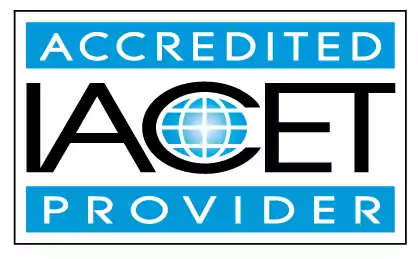Identify appropriate practice for the identification, prevention, and treatment of communicable diseases and illnesses in child care setting
Learn the best practices for identifying, preventing, and treating communicable diseases and illnesses in child care settings. Our expert advice and resources will help you create a safe and healthy environment for children. Explore our domain areas of early childhood education and child care centers to stay updated on the latest guidelines and recommendations.Trainings incorporating this outcome
Proficiency Level
States
Alabama (4) Alaska (4) Alberta (4) Arizona (4) Arkansas (2) Australia (4) California (4) Colorado (4) Connecticut (4) Delaware (4) District of Columbia (4) Florida (4) Georgia (3) Hawaii (4) Idaho (4) Illinois (2) Indiana (4) Iowa (4) Jamaica (4) Kansas (4) Kentucky (2) Louisiana (4) Maine (4) Manitoba (4) Maryland (4) Massachusetts (4) Michigan (4) Minnesota (4) Mississippi (4) Missouri (2) Montana (4) Nebraska (3) Nevada (2) New Hampshire (4) New Jersey (2) New Mexico (4) New York (3) Newfoundland and Labrador (4) North Carolina (2) North Dakota (4) Nova Scotia (4) Ohio (4) Oklahoma (4) Ontario (3) Oregon (3) Pennsylvania (3) Prince Edward Island (4) Puerto Rico (4) Quebec (4) Rhode Island (4) Saskatchewan (4) South Carolina (2) South Dakota (4) Tennessee (2) Texas (3) Thailand (4) United Kingdom (4) Utah (4) Vermont (4) Virgin Islands (4) Virginia (4) Washington (4) West Virginia (4) Wisconsin (4) Wyoming (3)
120 hours courses
45 hours courses
3 hours courses
Related Outcomes
- Identify appropriate practice for the identification, prevention, and treatment of communicable diseases and illnesses in child care setting
- Identify appropriate practice for the identification, prevention, and treatment of communicable diseases in childcare.
- Identify appropriate practices communicable diseases/illnesses and immunizations and their schedules in child care setting
- Explain appropriate practices for the identification, prevention, and treatment of communicable diseases in childcare
- Identify strategies and practices for preventing shaken baby syndrome and abusive head trauma in the child care setting
- Identify practices for managing Illnesses, diseases, allergies, and medication in child care.
- Identify appropriate practices for identify and demonstrate an children: Identify examples of appropriate activities for different ages
- Identify appropriate practices for identify and demonstrate an children: Define Developmentally Appropriate Practice
- Identify appropriate practices for identify and demonstrate an children: Identify importance of individual planning
- Identify appropriate practices for identify and demonstrate an children: Teacher directed vs child directed
- Identify responses to typical daily child care scenarios with solutions that are aligned with Child Care Regulations
- Demonstrate understanding of inclusionary practices for ADHD in the child care setting.
- Demonstrate understanding of inclusionary practices for autism spectrum disorder in the child care setting.
- Demonstrate understanding of inclusionary practices for conduct disorder in the child care setting.
- Identify the components of a lesson plan for the family child care setting
- Give examples regarding the prevention of illness in child care programs
- Demonstrate understanding of inclusionary practices for hemophilia in the child care setting.
- Demonstrate understanding of inclusionary practices for cerebral palsy in the child care setting.
- Identify appropriate practices for identify and demonstrate an children: components of a lesson plan
- Identify factors that may influence learning for a child in the family child care environment.
Related Articles
- Need Annual Training Hours Texas?
- Oregon Providers Health and Safety Training
- Federal Health and Safety requirements
- Michigan Child Care Center Aide Requirements
- How to Start a Daycare with the Right Qualifications
- National Standards for Child Care
- CDA Subject Area 1 Training: A Targeted Approach to Early Childhood Education
- Every Childcare Provider Must Be Trained in Basic Health & Safety
- Is the 90-Hour Childcare Certification Really Worth It?
- MSDE Basic Health and Safety: What Does It Cover?
- Medical Administration Training for Childcare Staff: More Than Just a Requirement
- Demystifying the Online MSDE Basic Health and Safety Course
- Critical Skills for Childcare Professionals: Health, Safety, and Emergency Preparedness Training
- Navigating the Rules: Licensing and Regulations for Your In-Home Daycare
- Navigating the Licensing and Regulations for Your Daycare
- Shots of Success: What Vaccines Do Children Need for Childcare Enrollment?
- Emergency Preparedness in Child Care: What Every Provider Should Know
- 🚀How Can New Staff Quickly Get Oriented to North Dakota’s Childcare Standards?
- ChildCareEd Courses for Child Care Providers in New York
- Preventing Infectious Diseases in Illinois
 12 CEUs
12 CEUs